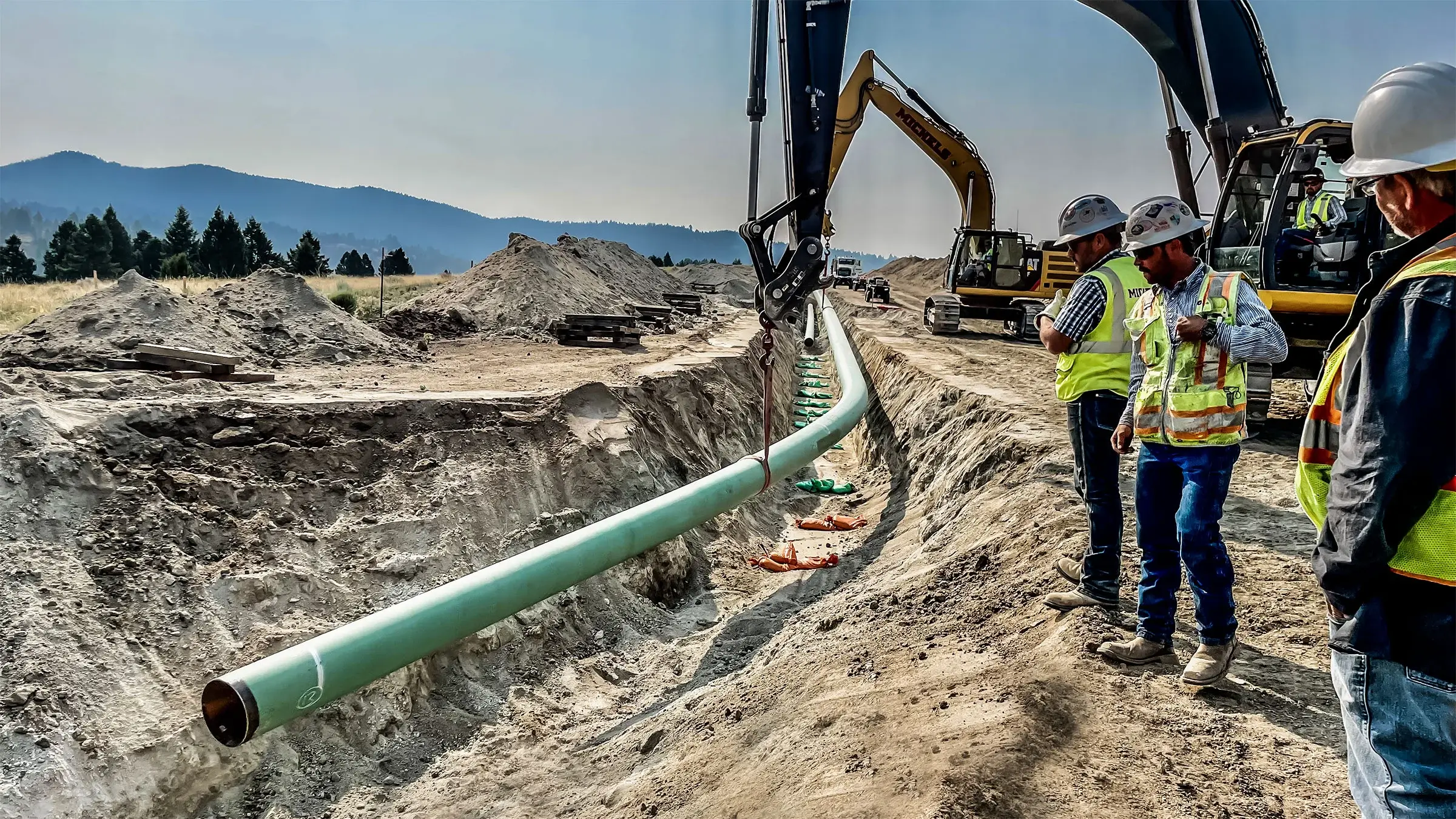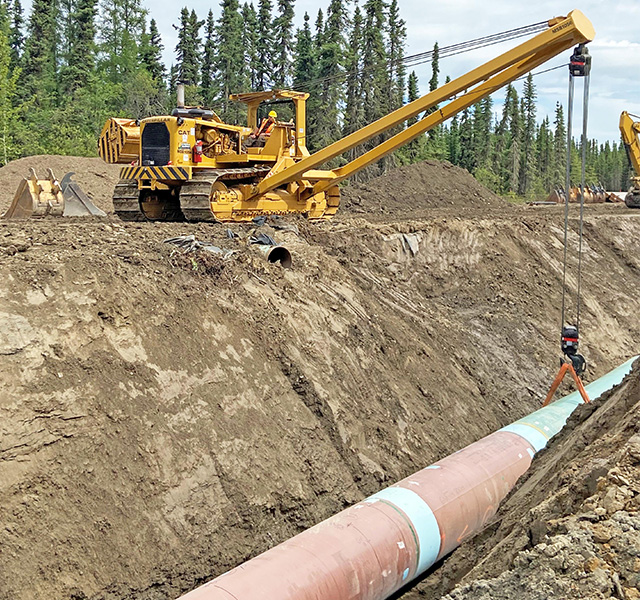How to Handle Pipe Failures With Support From Creek Pipe contact
Comprehending the Basics of Pipes Installation: What You Need to Understand About the Process
Appropriate pipe installation is essential for any kind of pipes system. It calls for careful consideration of numerous variables, including product choice and adherence to regional regulations. A well-planned design can prevent issues like stress loss, while the right tools assure effective joining techniques. Nevertheless, even experienced installers can make common mistakes. Recognizing these basics can cause an extra efficient and durable system, motivating a more detailed consider the key elements associated with the procedure.
Choosing the Right Products for Pipe Installation
When considering pipe installation, the option of appropriate materials is important to making certain longevity and capability. Numerous products are available, each offering one-of-a-kind benefits and considerations. For instance, PVC pipelines are light-weight, immune to corrosion, and cost-effective, making them perfect for property pipes. Conversely, copper pipes, recognized for their longevity and capacity to stand up to heats, are usually liked for heating systems.Additionally, galvanized steel pipelines offer strength and durability, ideal for sturdy applications, although they are susceptible to corrosion over time.For underground installments, polyethylene pipes are preferred because of their flexibility and resistance to stress fracturing. Correct material option depends upon the certain demands of the task, consisting of stress scores, temperature variations, and the chemical nature of the liquids being transported - Creek Pipe pipeline construction. Ultimately, notified choices relating to pipe products add significantly to the overall success and durability of plumbing systems
Understanding Local Building Regulations and Laws
Exactly how can understanding local building ordinance and regulations effect pipe installation? Familiarity with these codes is vital for making certain that pipe installations are risk-free, compliant, and efficient. Local building ordinance detail certain needs relating to products, installation methods, and security procedures, which must be abided by to avoid prospective legal problems and costly fines.Failure to abide can bring about assessments being stopped working, delays in task conclusion, and even mandated removal of improperly mounted pipelines. Furthermore, comprehending zoning legislations and guidelines can affect the kind of products permitted, in addition to the approaches utilized for installation.Contractors and home owners alike ought to spend time in assessing regional regulations prior to beginning any installation project. This aggressive method not just advertises security however likewise enhances the overall quality and toughness of the pipes system, ultimately fostering long-term functionality and fulfillment.
Preparation Your Pipe Design and Style
Appropriate preparation of pipe design and layout is vital for attaining an effective pipes system. This process starts with reviewing the certain requirements of the space, thinking about the place of fixtures and home appliances. Exact measurements ensure that pipelines are properly directed, decreasing bends and turns that can result in press loss.Consideration of the circulation prices and the sorts of products made use of is vital, as various materials have varying durability and compatibility with plumbing systems. In addition, the designer must account for future developments or adjustments to the layout, enabling versatility in instance of renovations.Efficient drain and air flow are likewise substantial elements of the layout, as they protect against blockages and guarantee proper waste removal. Collaboration with local building codes assures conformity and safety and security, which is extremely important in any pipes installation project.
Necessary Devices and Devices for Installation
Successful pipe installation rests on having the right devices and devices available. Important tools consist of pipe cutters for tidy cuts, wrenches for tightening installations, and pliers for grasping and transforming pipelines. In addition, a level guarantees pipes are mounted uniformly, while a measuring tape aids in attaining specific lengths.For specific materials, a blowpipe may be essential for copper pipelines, while a PVC cutter is crucial for plastic choices. Safety and security tools, such as handwear covers and safety glasses, shields installers from prospective risks during the process.A pipeline bender can be particularly beneficial for developing smooth curves without jeopardizing stability, while a torque wrench guarantees that links are secured to the supplier's specifications.Having these tools easily offered not only facilitates a smoother installation procedure but also adds to the total longevity and performance of the pipes system. Correct equipment is essential in achieving durable results.
Methods for Correct Pipe Joining and Securing
Accomplishing a secure and leak-free link between pipes calls for cautious attention to signing up with and securing methods. Various techniques exist, each fit to different pipe materials and applications (Creek Pipe Texas oilfield). Welding is often employed for steel pipes, guaranteeing robust links via warm blend. In comparison, plastic pipes take advantage of solvent concrete or fusion welding, producing solid, long-term bonds.Threaded connections are usual in both metal and plastic piping, needing exact positioning and using proper sealants, such as Teflon tape or pipe dope, to stop leakages. Compression installations use one more alternative, where mechanical pressure secures the pipelines with each other, making them conveniently dismantled for web link maintenance.Regardless of the approach selected, appropriate preparation is crucial. This includes cleaning pipe ends and ensuring they are devoid of particles. Implementing these strategies carefully will enhance the long life and integrity of the pipe system, eventually contributing to its efficient efficiency
Typical Errors to Prevent During Installation
Throughout pipe installation, staying clear of usual blunders is necessary for ensuring a reliable and reliable system. One frequent error is stopping working to measure and cut pipelines properly, which can bring about improper fittings and leaks. Furthermore, disregarding to inspect the compatibility of products can result in rust or other damages with time. Improperly protecting joints and connections can also produce powerlessness in the system, creating prospective failures.Another usual mistake is overlooking the significance of incline and water drainage; pipes need to be mounted at the correct angle to help with appropriate circulation. Poor support for pipes can cause drooping and stress, impacting the stability of the system. Inevitably, ignoring local codes and guidelines can cause pricey rework and safety risks. By understanding these pitfalls, installers can substantially enhance the longevity and performance of pipe systems.
Maintenance Tips for Lasting Pipe Systems
To guarantee the longevity of pipe systems, regular evaluations and cleaning are vital methods. These procedures aid recognize potential problems before they escalate right into significant troubles. In addition, employing proper insulation techniques can even more secure pipelines from temperature fluctuations and ecological variables.
Regular Assessments and Cleansing
Routine inspections and cleansing are important for keeping the long life and effectiveness of pipe systems. Frequently examining pipelines for indications of rust, leakages, or obstructions can assist recognize prospective issues before they intensify into pricey repair services. Cleaning pipes occasionally eliminates accumulation that can restrict circulation and promote damage. It is a good idea to arrange evaluations at the very least yearly, yet a lot more regular checks might be necessary in high-usage settings. Utilizing specialist solutions for extensive cleansing warranties that all debris is effectively gotten rid of. Additionally, keeping records of assessments and upkeep tasks aids in tracking the system's health and wellness gradually - Creek Pipe roustabout. By focusing on these methods, property owners can enhance the reliability and life-span of their pipe systems
Correct Insulation Strategies
Efficient insulation methods play a vital function in maintaining the efficiency and long life of pipe systems. Appropriate insulation reduces heat loss in address warm water pipelines and stops freezing in cool water pipelines, considerably decreasing energy costs and possible damages. Typical materials used for insulation consist of fiberglass, foam, and rubber, each offering differing levels of thermal resistance. It is essential to guarantee that insulation is used consistently, covering all subjected locations without voids. In addition, safeguarding insulation with ideal bolts assists maintain its placement and efficiency gradually. Regular evaluations ought to be conducted to recognize wear and tear, guaranteeing prompt substitutes. By applying these techniques, pipe systems can run efficiently and have a prolonged solution life, ultimately benefiting both the atmosphere and the homeowner.

Regularly Asked Questions
How Do I Identify the Appropriate Pipe Dimension for My Project?
Identifying the proper pipe dimension involves assessing the job's circulation needs, stress specs, and the kind of liquid being transferred. Consulting layout criteria and conducting calculations warranties optimal efficiency and performance in the installation process.
What Are the Environmental Effects of Different Pipe Materials?

Can I Set Up Pipes Myself or Should I Work with a Specialist?
The concern of whether to mount pipes separately or work with an expert frequently depends on the individual's ability level and job complexity. A professional might assure compliance with regulations and reduce possible long-lasting issues.

The Length Of Time Can I Expect My Pipe Installation to Last?
The durability of pipe installation varies considerably, generally lasting you can find out more 20 to 100 years, depending on materials, installation quality, and upkeep. Normal examinations and correct treatment can boost longevity and stop premature failings.

What Are the Indications of a Failing Pipe System?
Signs of a failing pipe system consist of regular leaks, uncommon water pressure adjustments, discolored water, mold and mildew development, and relentless moisture. House owners must keep an eye on these indications to avoid pricey damage and assurance timely fixings are made.